At a Glance
- A rapidly expanding thrift bank in the Philippines, sought to implement a Management Control System (MCS) to enhance efficiency and increase new loans.
- This case study uncovers the client’s company challenges, such as a lack of systematic approach in their sales process, and more. Learn how the project achieved significant results, including a 70% reduction in customer in-branch wait times.
Key results
'New to Bank' sales growth
30%
Decreased customer "in Branch" cycle time by
70%
Increased the Net Promoter Score (NPS) from
38% to 86%
Background
In the Philippines, thrift banks – savings and mortgage banks – are regulated financial institutions that accept savings deposits and provide mortgage loans. They promote financial inclusion, encourage savings and facilitate home ownership. These banks cater to individuals, small businesses and SMEs, offering financial services to sectors often underserved by larger banks.
This Filipino client is a well-established savings bank with over 40 branches across the country. Founded in the mid-20th century, it primarily serves educators and has built a reputation for community-focused financial services. Despite its strong regional presence, rapid expansion highlighted operational inefficiencies, particularly in sales processes and customer service.
Analysis
Prior to the project, an analysis identified several key opportunities for improvement within the client’s operations:
Ineffective Sales Processes: Lack of systematic planning and inconsistent sales execution.
Low Conversion Rates: Poor ratio of sales visits to actual new loans.
Customer Service Delays: Perceived inefficiencies in service delivery, though unmeasured.
Underutilised Staff: Branch employees were not fully engaged during low-traffic periods.
These issues threatened the bank’s ability to scale sustainably, prompting the need for a structured Management Control System (MCS).
Ready for a change in your organisation?
Implementation
A steering Committee of the client’s senior executives reviewed the project’s progress fortnightly. The key initiatives and deliverables were organised into three stages reflecting the customer interface:
Sales Generation, In-Branch Processes, and Customer Care.
Key initiatives included:
Sales Generation: Focused on enhancing direct sales planning, developing selling skills, and enriching the monthly Sales & Marketing Activity Plan. As a direct result, face-to-face visits increased by over 900%. Training programs and tools like the Monthly Activity Planner increased direct sales efforts, boosting new loans by 38-57%.
In-Branch Processes: Focused on introducing Operational Standards (Reasonable Expectancies), implementing a Loan Processing Tracker, enhancing Key Performance Indicators (KPIs) and a Dashboard tracker, and implementing daily briefings. These changes led to a reduction of over 50% in loan processing time, significantly decreasing customer waiting times. Loan Processing Trackers and daily briefings cut wait times by 70% and doubled staff productivity.
Customer Care: Involved assessing customer satisfaction through real-time feedback mechanisms and leveraging data for targeted sales and marketing efforts. Real-time feedback systems and referral programs elevated customer satisfaction scores from 38% to 86%.
Results
The partnership delivered transformative outcomes:
Financial growth: New loans grew by 55% in pilot branches, far surpassing targets.
Operational excellence: Staff productivity doubled, and loan processing times halved.
Skills development: Provided 1000+ hours of formal training in sales, customer service excellence, and active leadership.
Cultural shift: Introduced new customer standards, productivity tools, action planners & process controls as the basis for a continuous improvement culture.
The client achieved sustainable growth and a more potent competitive edge by addressing systemic inefficiencies and empowering staff.
* For confidentiality, all client-specific names and details have been omitted to protect the organisation’s identity while preserving the case study’s integrity.
Optimise processes to unlock revenue potential.













